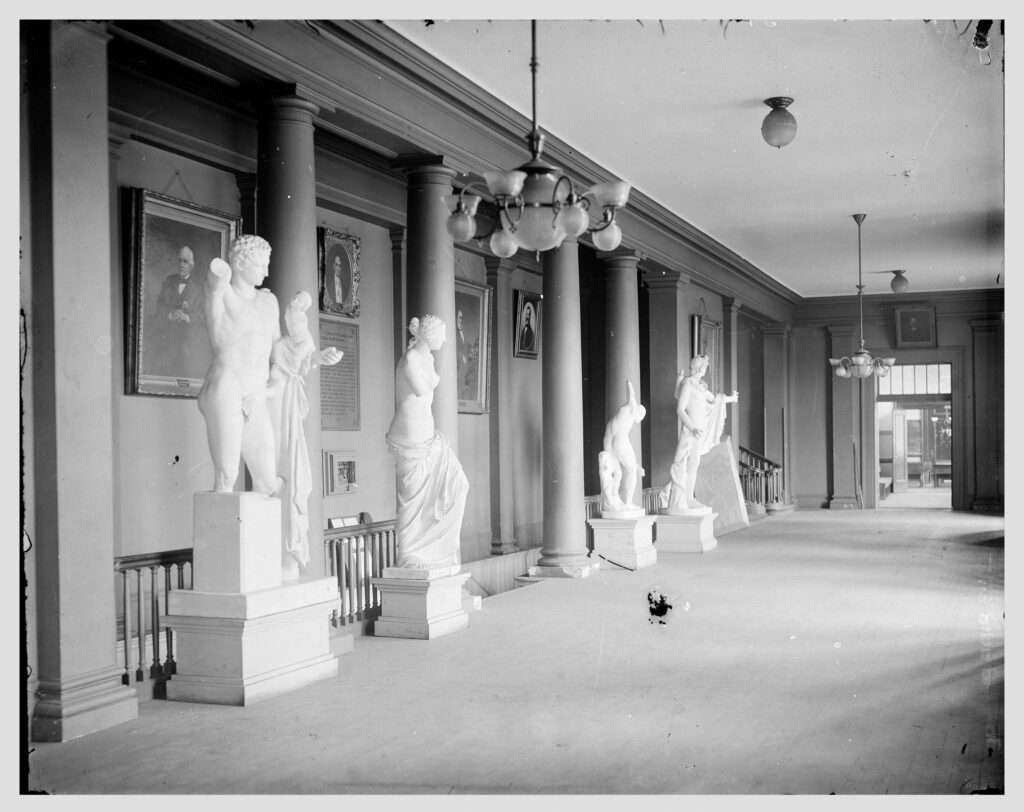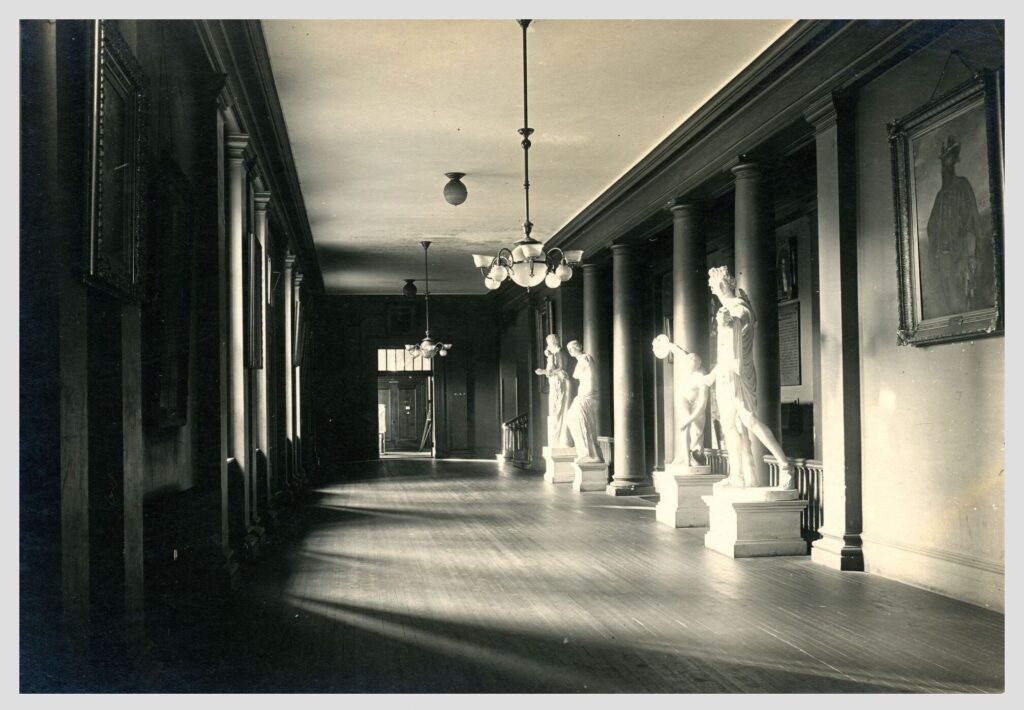
I went down a bit of a rabbit hole on the University of Virginia’s Old Cabell Hall recently. I was originally looking for the origin of the statues that originally lined the lobby, and ended up finding something even more interesting.
First, those statues. When I was first doing research almost two decades ago on the University of Virginia and the Glee Club, I came across a series of photos in the UVA Library digital collections that showed marble statues lining the railing of the basement stairs in Cabell Hall:

The photo dates to 1915, so about 15-18 years after the construction of the building. I haven’t been able to find a lot of other evidence regarding the statues, save for one additional photo (present in a couple of different prints and transparencies):

This latter photo was taken eight years later, in 1923. A UVA Magazine feature from 2016 discusses the statues, naming them as copies of the most famous Greek statues (Hermes and the Infant Dionysus, the Venus de Milo, the Discobolus, and the Apollo Belvedere), but does not disclose their origin. However, they do name their source, and Philip Alexander Bruce’s 1922 History of the University of Virginia offers a clue as to their disappearance:
An acute need was felt about 1911—12 for classical scholarships which would enable the most promising students in the School of Latin to undertake an advanced course without leaving the University of Virginia. A costly stereopticon was now regularly used by the head of the school, in the course of his lectures, in illustration of classical art and life, while plaster-casts of several of the most beautiful statues of the Roman and Greek civilizations had been bought and put in place in Cabell Hall for public exhibition. (V: 121)
So apparently the statues were only plaster, explaining both their sudden appearance without any note in the Board of Visitors records and their seeming disappearance later.
In the course of looking for the statues, though, I found even more interesting info about the construction of the hall, in the form of a series of photographs from a collection of photos of the works of McKim, Mead and White that is housed at Columbia University. There you can see details of the construction of the building, including the Guastavino tiled vaults in the basement and the use of structural steel in the construction, as well as the amphitheater levels under construction.




Previously: The Old Cabell Hall skylight.
